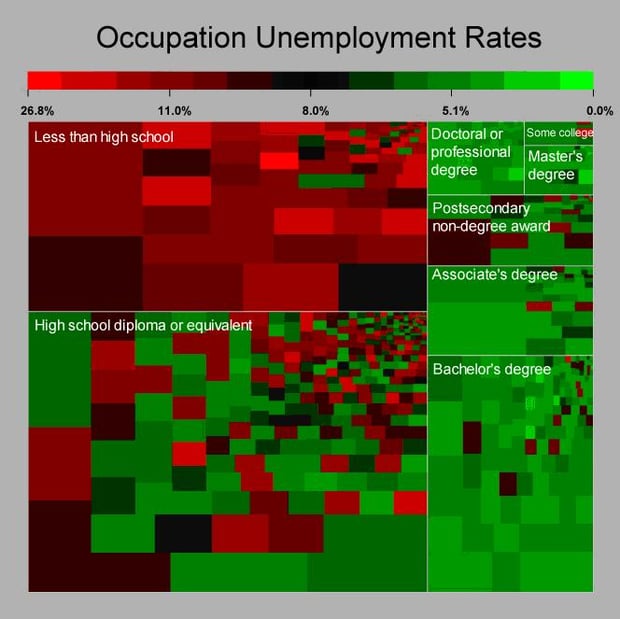Published on
Closer Alignment with Labor Demands Justifies Higher Education Investment

Now, perhaps more than ever, education providers of all types can reap the rewards of adjusting their curriculum and programs to the needs of their region’s fastest growing industries. Two trends have come together to provide a once-in-a-generation chance for institutions of higher learning, career and vocational schools, and workforce training centers to boost their market share and improve student outcomes.
First, the Great Recession has completely up-ended the status quo in the U.S. labor market. We have the largest number of unemployed and under-employed individuals in a generation, and there is a tremendous amount of training money available from Washington to help retrain these folks. From community colleges to career schools, from traditional four-year universities to workforce training centers, funding can be obtained if you can demonstrate that your program will result in a “positive student outcome.” In other words, you need to build a skill-set in your students that leads them to a job. However, many schools, colleges, and workforce training centers struggle to understand which fields are growing the fastest, which industries have the best long-term prospects, and what competencies are needed for today’s “in demand” occupations.
No longer can higher education simply rehash the programs and curriculum of the past two decades hoping they will satisfy the needs of local employers and facilitate the employment of their students. Schools, colleges, and training centers put themselves in a long-run disadvantage if they miss the opportunity to leverage the available government funds to better align their institutions with the ever-evolving needs of business. Undoubtedly the most able and nimble will gain at the expense of those institutions that rely on stale strategies, yesterday’s programs and outmoded delivery mechanisms.
A second trend is that despite high unemployment, there is both a skills gap and skills mismatch across America. There is a general shortage of skilled workers to fill many information technology (IT) jobs; skilled manufacturing and medical technicians; and a host of science, technology, engineering, and math occupations needed by expanding firms. Every month these jobs go unfilled because the local labor market doesn’t have the workers with the right skills. Meanwhile, many workers formerly in these fields have failed to keep up with the emerging trends for specialized and typically more-advanced skills needed for continued success in these jobs.
For the first time in a decade, manufacturers are considering relocating high-paying technology-intensive jobs back to the United States; but these job gains are contingent, in part, on communities being able to provide assurances that they have enough skilled workers to satisfy the firm’s needs. As these jobs are brought back to the United States, they will require the higher skills that are present in many of today’s growing industries—a more specialized understanding of robotics, material science, electronics, and electromechanical troubleshooting.
These two trends—ample money for retraining and the need for workers with specialized skills—have created the opportunity for higher education providers to reap a return on investment for:
- Initiatives to understand the current and emerging trends in their local labor market—what competencies, jobs, and industries are growing and need a training solution;
- Efforts to seek the available retraining monies available to get unemployed and under-employed workers into career tracks with long-run potential and;
- Engagement with local industry clusters constrained by a shortage of skilled labor.
Taken together these three activities will improve the local competitiveness of an economy and help its industries flourish. Also, given the unemployment rate among America’s lowest educated workers, there are large societal gains to helping these workers up-skill and move into occupations with better long-term prospects as shown in the Tree Map below.
Schools should start their re-alignment process by engaging labor market economists to combine the insight from real-time job data (on-line job postings and recent jobs gains) with longer-term projections for industry growth and models that take into account the increasing need for specialized skills and post-secondary education. This analysis can lead to a detailed understanding of the relative supply and demand for various occupations in your area. Ultimately, this type of analysis can empower education providers to begin a strategic discussion with their business community, economic developers, and workforce training specialists to jointly enhance their region’s economic prospects.

Author Perspective: Analyst

